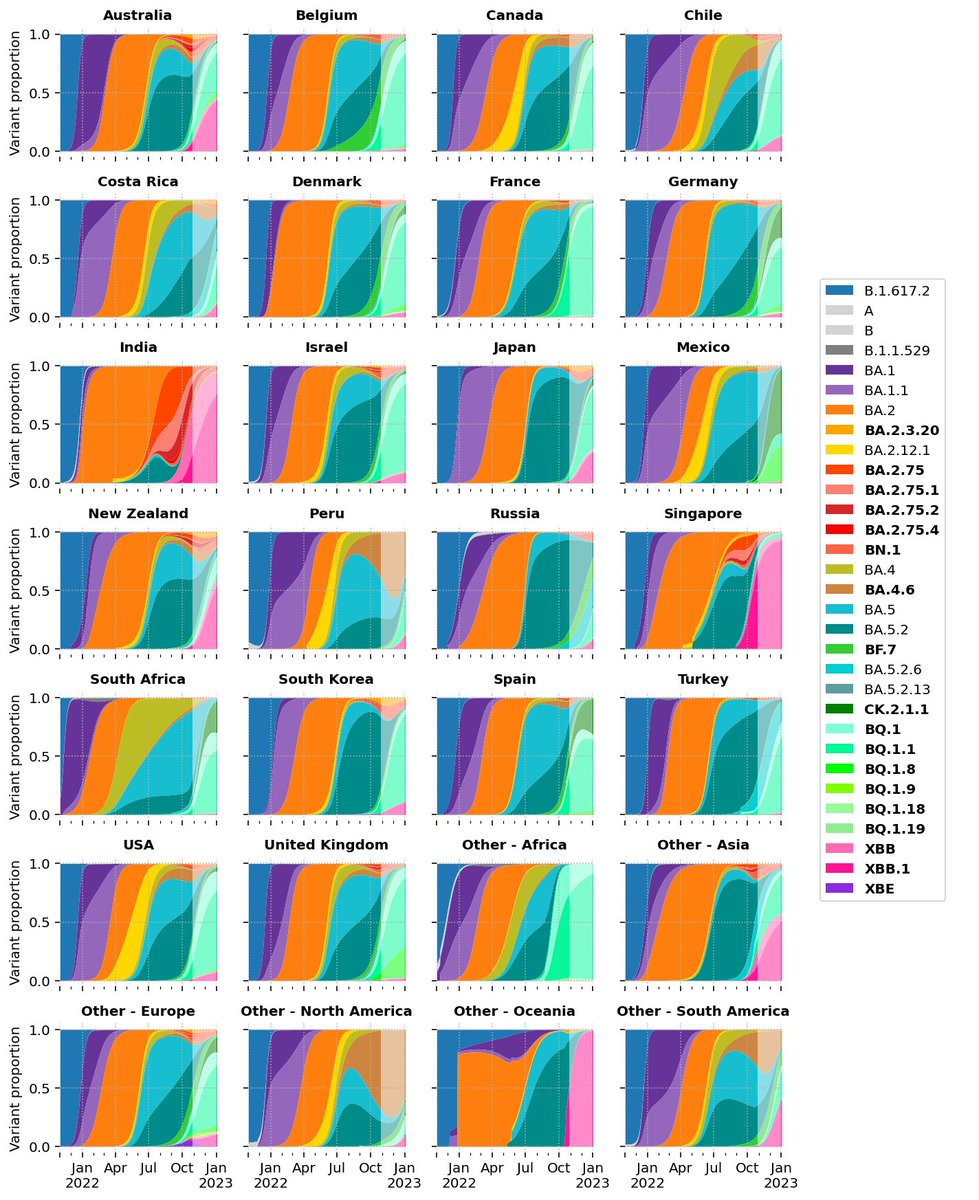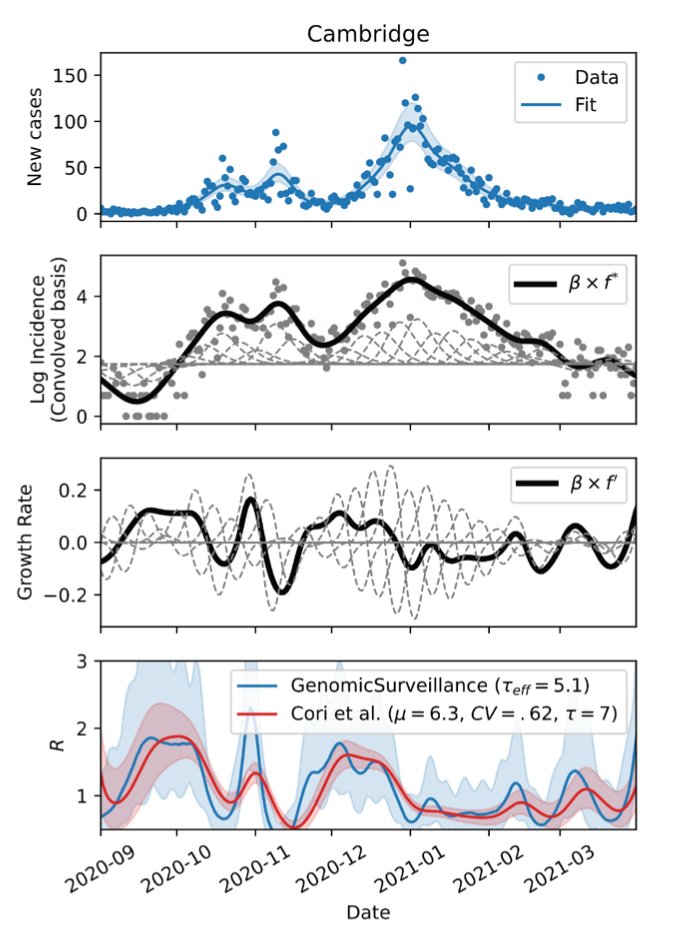
Division head @dkfz, professor @UniHeidelberg, visiting group leader @EMBLEBI. Previously @sangerinstitute and @ETH_en. We build AI to study cancer. Now at 🦋.
How to get URL link on X (Twitter) App



 In slowing down XBB.1.5 follows a pattern that has been noted also for BQ.1.1 or XBB.1.1.
In slowing down XBB.1.5 follows a pattern that has been noted also for BQ.1.1 or XBB.1.1. 



 Europe and North America see high frequencies of BQ.1*.
Europe and North America see high frequencies of BQ.1*. 




 Background: There is a whole zoo of omicron sublineages, often defined by a range of mutations enabling partial immune escape.
Background: There is a whole zoo of omicron sublineages, often defined by a range of mutations enabling partial immune escape. 


 In line with international observations BQ.1.1’s growth advantage to other lineages is slightly lower than initial estimates suggested.
In line with international observations BQ.1.1’s growth advantage to other lineages is slightly lower than initial estimates suggested.https://twitter.com/moritzgerstung/status/1588466692014891008?s=61&t=byhoNXuBrlk6B9OtW9LgFg



 While the initial estimates of BQ.1.1's growth advantage to BA.5 were between 10-15%, the estimate has come down to ~10% more recently.
While the initial estimates of BQ.1.1's growth advantage to BA.5 were between 10-15%, the estimate has come down to ~10% more recently.


 The current uncertainty of XBB.1’s growth rate makes it an open race.
The current uncertainty of XBB.1’s growth rate makes it an open race. 


 BQ.1.1 remains the fastest spreading variant in agreement with last week’s estimates.
BQ.1.1 remains the fastest spreading variant in agreement with last week’s estimates.

 A number of variants possessing immune evasion mutations have been observed — BA.4.6, BF.*, BA.2.75.*, BQ.1.*
A number of variants possessing immune evasion mutations have been observed — BA.4.6, BF.*, BA.2.75.*, BQ.1.*

 All BA lineages have a growth advantage s over Delta/B.1.617.2*.
All BA lineages have a growth advantage s over Delta/B.1.617.2*.

 Hintergrund: Omicron ist nicht nur hochansteckend, sondern kann auch Geimpfte und Genesene infizieren.
Hintergrund: Omicron ist nicht nur hochansteckend, sondern kann auch Geimpfte und Genesene infizieren.
 These mutations recurrently cluster in certain functional sites of the virus’ genome.
These mutations recurrently cluster in certain functional sites of the virus’ genome. https://twitter.com/miamalan/status/1463846528578109444
https://twitter.com/chrischirp/status/1463885539619311616?s=201. B.1.1.529 hat mehr oder weniger alle Mutationen, die wir aus Alpha, Beta, Gamma und Delta kennen, gleichzeitig und noch weitere dazu.
https://twitter.com/PeacockFlu/status/1463176821416075279?s=20

 Background: The list of Delta sublineages has gotten longer – more than 121 AY.x lineages + sublineages.
Background: The list of Delta sublineages has gotten longer – more than 121 AY.x lineages + sublineages. 



 @harald_voeh has developed a model that tracks 62 different lineages across 315 local authorities in England. His model estimates total and lineage-specific incidence and growth rates.
@harald_voeh has developed a model that tracks 62 different lineages across 315 local authorities in England. His model estimates total and lineage-specific incidence and growth rates. 


 Jessica Svedlund developed a base-specific extension of the in situ sequencing protocol (BaSISS) to detect somatic mutations on a microscopy slide with fluorescently tagged padlock probes. 2/9
Jessica Svedlund developed a base-specific extension of the in situ sequencing protocol (BaSISS) to detect somatic mutations on a microscopy slide with fluorescently tagged padlock probes. 2/9 

 Fitting lineage-agnostic daily PCR test and viral genome data from COG-UK to 382 local authorities we find evidence that B.1.1.7 has spread in a staggering 200/246 of affected LTLAs during the November lockdown (R>1) while at the same time other lineages contracted (R<1). >>
Fitting lineage-agnostic daily PCR test and viral genome data from COG-UK to 382 local authorities we find evidence that B.1.1.7 has spread in a staggering 200/246 of affected LTLAs during the November lockdown (R>1) while at the same time other lineages contracted (R<1). >> 


